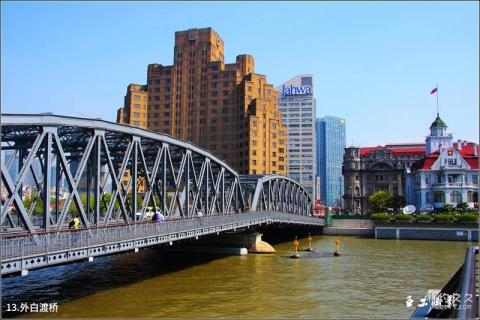
Introduction to Waibaidu Bridge: Waibaidu Bridge is the oldest bridge on the Suzhou River. It is located at the mouth of the lower reaches of the Suzhou River and faces the Huangpu River. It is one of the landmark buildings of old Shanghai. Waibaidu Bridge is a steel frame structure under-supporting bridge and is the largest steel bridge in Shanghai. The bridge has two holes, with a total length of 106.7 meters. The roadway is 11.2 meters wide, and the sidewalks on both sides are 3.6 meters wide. After many reconstructions, the current load capacity is 20 tons. It is an important passage connecting Shanghai to the north and east of Shanghai. There is a high level of pedestrian and vehicle traffic across the bridge. Legend has it that there were no bridges on the Suzhou River in the beginning, so people relied on the ferry boats at the ferry crossing. After Shanghai opened as a port, the prosperity on the river banks appeared overnight, and the original ferry crossings were far from meeting the needs. In 1856, a British businessman named Wells built a wooden bridge at the Outer Ferry location in the form of a joint-stock company, which was known as the "Outer Ferry Bridge". Like many roads and bridges today, there is a toll on the wooden outer ferry bridge. Later, it was discovered that the bridge toll was only charged to Chinese people, so it was protested and ignored by the Chinese people. It is said that in consideration of the rising indignation of the Chinese people, in August 1873, the Ministry of Industry and Industry Bureau built a wooden bridge about a few dozen meters west of the Waifuo Bridge that was free to Chinese people and named it "Garden Bridge". The Bund Park echoes. The working people no longer had to pay the two cents to cross the bridge, so everyone called the newly built wooden bridge "Waibaidu Bridge", that is, the "Baidu" bridge that is not crossed without crossing.
